Java for Kids: A Fun and Easy Guide to Learning Java Programming
Java for Kids: A Fun and Easy Guide to Learning Java Programming
In the 21st century, programming is not just about writing a simple piece of code or just displaying "Hello World". Coding now means building animations, games and projects that can help kids understand real-world applications of Programming languages. Coding is now one of the most important skills for kids to keep up with this tech-driven world and feel a sense of accomplishment and confidence.
When we talk about programming languages, proficiency in Java is one of the most used and in-demand skills today. Java coding for kids is becoming increasingly popular as parents and educators recognize its potential to develop logical thinking and problem-solving skills at an early age. In this blog, we will discuss why Java can be the ideal programming language for kids to learn and the best way to learn Java effectively. Whether through interactive tutorials or engaging Java online classes, children can build a strong understanding of Java as a powerful programming tool.

What is Java Programming?
Java has been around for decades and is a very popular and powerful language used for various purposes and building applications. It was developed in the mid-1900s by Sun Microsystems and since then people have loved its power and flexibility.
Java is a simple, portable, and robust language. The features of Java make it an excellent choice for learners, including young enthusiasts exploring Java coding for kids. Its versatility allows developers to write a single code batch that can run on any machine with JVM (Java Virtual Machine) installed. This characteristic makes Java an ideal option for those looking for the best way to learn Java while understanding how it works seamlessly across platforms. With its "write once, run anywhere" capability, Java is widely used in the IT industry, powering mobile applications (like Android apps such as WhatsApp) and large-scale enterprise systems. For those interested in exploring the language further, Java online classes provide a convenient and structured way to master this in-demand skill.
Key Features of Java Programming Language
Java Programming is very versatile and powerful with features that make it suitable for a wide range of applications. Java offers a great foundation for beginners, and taking Java online classes can help learners understand its key concepts from anywhere. Here are some of the features that set Java language apart:

Java is object-oriented, which means Java code can be broken down into smaller reusable parts through OOPs.
Java is platform-independent because it compiles code into bytecode that can run on any JVM-enabled device thus making it portable.
Good error handling and security features make it safe for many applications due to strong memory management.
Large standard library with a lot of tools and APIs for Java development.
Multithreading—In Java, this allows running multiple threads at once (a must-have feature for modern programs).
Lots of resources in the form of libraries and forums are available for Java programmers.
Benefits of Java for Kids
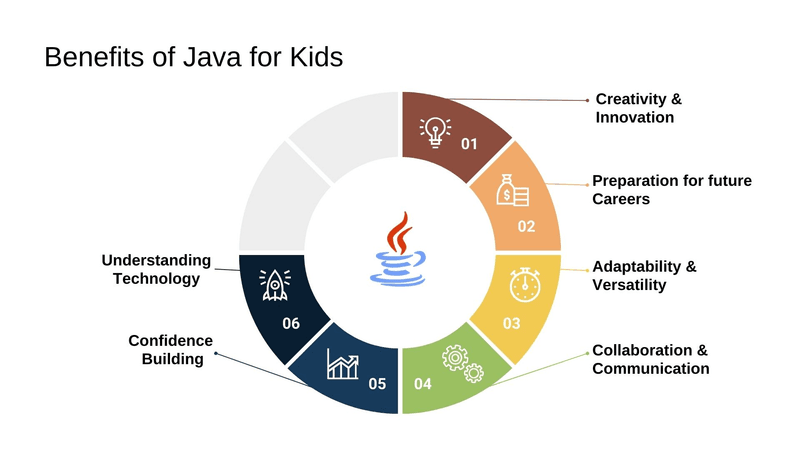
Using Java coding for kids, children can demonstrate their work to be empowered, engaged, and excited to delve into the world of programming. Java online classes provide an excellent platform for young learners to explore this versatile language. Moreover, the best way to learn Java involves structured lessons that cater specifically to children's needs, ensuring they gain a solid foundation while enjoying the process. Here is a closer look at the numerous benefits that Java coding can offer children:
Children can ignite their creativity by making their own versions of applications, games, and animations through Java coding. This might include mimicking or copying already existing games/web applications that fascinate them or building entirely new projects from scratch.
Learning coding in Java at an early age builds a foundation in kids for future career aspects in technology, software development or computer science.
Due to its adaptability in different areas like web development, and mobile apps among others, it has opened various windows for kids to apply their coding skills.
Gaining expertise in Java coding bolsters one’s confidence as children see what they imagine being transformed into reality through programming.
With kids learning to code in Java, teamwork comes naturally. Projects can be made in teams promoting brainstorming and problem-solving attitudes in kids.
Learning how to code enables youngsters to grasp how this digital era works, hence they become more informed responsible citizens.
Developing Problem-Solving Skills and Logical Thinking

To handle challenges effectively, make informed choices, and adapt to different situations, ensuring success in personal and work-related life aspects, kids must have problem-solving abilities and logical thinking. This is where Java coding for kids comes in, as it helps them build these vital skills from the initial days.
Java coding requires children to break problems into smaller parts so that they can solve them step by step. This builds good problem-solving skills in kids.
Writing code in Java involves designing algorithms for executing programs which enhance the algorithmic thinking of children as they learn to recognize sequences and patterns.
To write Java code also means finding errors and modifying solutions over and over again which helps kids become patient and strong as they work out defects in their software, making it perfect little by little thereby improving their problem-solving skills.
Best Strategy to Learn Java
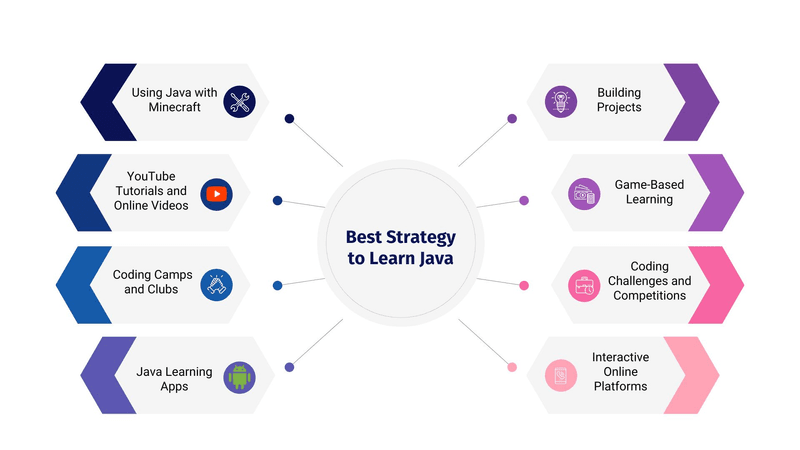
Learning Java can be an exciting and enjoyable experience, especially when using interactive and fun projects. Here are some ways to get started with Java coding:
➤ Interactive Online Platforms: Websites like Codecademy, Khan Academy, and Coursera offer interactive Java courses that include hands-on exercises and immediate feedback. These platforms make Java engaging and accessible for kids and beginners.
➤ Game-Based Learning: Sites like CodeCombat and Roblox offer learning Java (or other similar languages) where the learner can create games. Such activity allows children to create their own games in which they can quickly observe the effect of the code they entered and, thus, learn with enjoyment.
➤ Coding Challenges and Competitions: One can maintain a flavour of fun while learning Java by participating in coding challenges on HackerRank LeetCode, and Codewars. They present the user with a number of problems to work on; these come in various levels of difficulty to enhance the learning process as well as a challenge for enhanced performance.
Furthermore, the ACSL provides annual programming competitions for middle schools, organizations or local groups and more than a thousand students from different countries including the United States, Asia, Canada, Europe and other participating countries solve different coding problems in the challenge.
➤ Building Projects: Java programming might seem rather abstract, and therefore it might be easier to implement it while working on small projects such as a calculator, a simple game, or a personal website. Assignments give a feeling of fulfilment and also contribute to the reiteration of skills in programming.
➤ Java Learning Apps: Other mobile apps include SoloLearn and Mimo, companies that provide Java lessons that are as stylish and mobile as the devices on which the participants are learning. These apps normally contain quizzes, coding practices as well and community support for enhanced lively training.
➤ Coding Camps and Clubs: Being involved in a coding camp or joining a club can be more engaging and effective as well as more social. Most of them engage in group activities whereby they work on projects together, exchange knowledge and even engage in coding sessions. The use of Java by beginners can therefore be a communal affair.
➤ YouTube Tutorials and Online Video Collection: Java tutorial videos on the internet like on YouTube and other tutorial websites number in the tens of thousands. It is often easier for children to have access to these videos which help them to gain more knowledge.
➤ Using Java with Minecraft: Innovative and structural ones like Minecraft Forge let the kids perform Java coding to come up with mods for the game Minecraft. The approach of incorporating coding with a well-known game can help make the process of studying Java exciting and quite relevant for the younger generation.
Java Coding Concepts for Kids
Java is one of the most unique and flexible programming languages that has a well-developed course of study, offering Java online classes that teach the core fundamentals of code in an entertaining and intellectual way.
Forgetting about toys and encouraging the creativity of children, kids begin learning about interaction with computers and data. Java coding for kids helps them to learn different mathematical functions and comparisons where control structures such as if-else and loop bring about decision and repetitive operations.
Detailed procedures must be divided into sub-procedures; OOP principles include Classes, Objects, Inheritance, Encapsulation, and Abstraction which are useful in modelling different real-world applications. These concepts are discussed in detail in a subsequent part of this blog, providing the best way to learn Java for young aspiring programmers.
Basic Java Coding Concepts

Variables and Data Types: Reflecting on the definition of variables in Java language, one can think of them as vessels that store information. In Java, data that are to be stored are best stored in varied types of containers in the sense that different types of data require different types of containers. For instance, there is a type called int used for integers, double for decimal point numbers and the type String for text input.
Operators: These include operators that work on variables or values to make certain functions possible. Children will also be introduced to arithmetic operators which include +, -, *, and / denote addition, subtraction, multiplication and division respectively as well as relational operators that will include >, <, == that correspond to greater than, lesser than and equality respectively.
Control Structures: A control structure determines the flow of the code written. Key control structures include If-Else Statements and Loops.
If-Else Statements: These statements in the code block assist the program in arriving at some decisions based on certain criteria. For example, a person might say “If it is the rainy season, carry an umbrella; else, ignore carrying the umbrella.”Loops: Loops mean running a certain peace of code again and again depending on criteria. The usage of Loops keeps the code short and intact. For example, the for and while statements can be used to repeat operations – this describes the actions of the following pseudo-code; [Print the numbers from 1 to 10].
Methods: They are similar to Detail Activities in the sense that methods are sub-programs in a program. They bear specific duties and can be utilized severally to get the intended results. For instance, a greet() method could contain code which prints a greeting message when called.
Classes and Objects: It is worth noting that Java is an Object-Oriented Programming (OOP) language and in this language, objects are used to represent real-life objects. A class is similar to a blueprint in construction as and represents objects with their characteristics, (attributes or fields), and how they can behave (methods). For instance, an implemented Dog class may contain fields such as name and breed, and methods: bark() and eat().
Introduction to Object-Oriented Programming
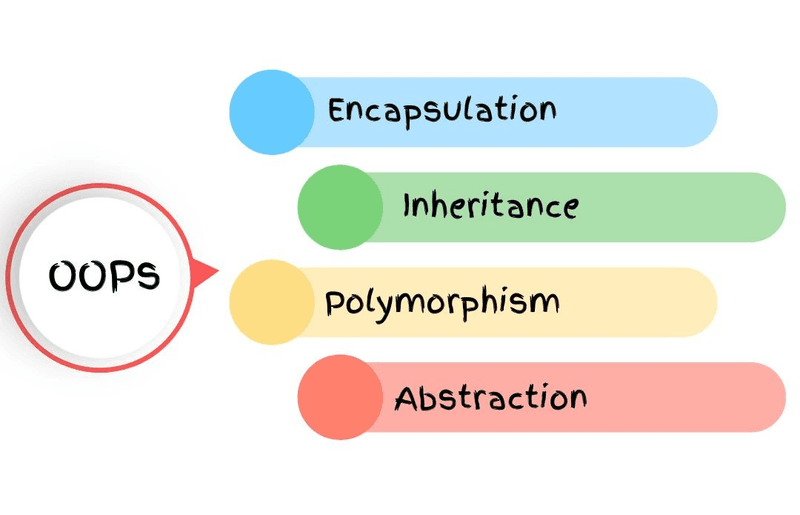
As said earlier Java is an Object Oriented Programming Language, where the core concept revolves around “objects”. Anything and everything in Java is an object, including data or a function. This approach leads to the development of components which cut across different projects thereby conceptually easing project handling.
Java is based on OOP and the fundamental concept of objects: The objects are the concrete realizations of classes, and classes serve the purpose of defining objects. These classes declare the attributes (variables or fields) and actions or operations (functions or methods) that objects can exhibit.
The key principles of OOP in Java include encapsulation, inheritance, polymorphism, and abstraction. Let's see them in more detail below.
Encapsulation: Encapsulation refers to the collection or bundling of all variables (data) and all other functions in the program that manipulate these variables at a particular location. This allows application encapsulation and hiding the internal status of an object and provides the only public interface, which promotes safety and cooperation.
Inheritance: Inheritance happens when one class or more gets to have its attributes and/or functionality from another class. This intends to improve the coding scenario and the formation of classes in an organized manner.
Polymorphism: Polymorphism makes sure that where ease and flexibility of operations are needed in an application, different objects that possess uniform attributes are treatable as one that belongs to a higher class. This leads to the improvement of code legibility, versatility, and sustainability.
Abstraction: Encapsulation means some of the internal elements of a class being kept from view and only the public face of the class is revealed. Java for instance has the concept which is abstract classes and interfaces in which the programmer will be assisting with an important piece of code leading to the reduction of complication of code.
Online Resources to Learn Java Programming
It is suggested that unless the kind of material that is used is chosen properly, children do not only learn programming but they are also able to have fun when coding. Below are some of the best sites and Java platforms that come in handy when teaching kids how to code in Java, or better still, enhancing their fun time while grasping Java lessons.
✅ SoloLearn: This one is freely available for download and in this app, one will find Java lessons for kids which include coding practice in the form of lessons. It has short classes and friendly educators for a user to learn and contribute to code.
✅ CodeMonkey: It is a very entertaining application where children can learn some basic principles of coding. In the USA and Canada, CodeMonkey appears to be the most preferred platform among kids between 6-14 years of age.
✅ Robocode: As for Robocode, formally it is a game, yet, it helps kids to know Java programming and do it with the help of programming battle robots. It is a well-done joy which looks like the game really and children have to code in Java as the results of this game show.
✅ Codewars: Codewars is an online service made for Java coding through a large collection of “ kata. ” There are certain puzzles and challenges for better illutation, and, depending on the choice of a mission, children can be part of the team or work for themselves and climb the ranks with difficulty.
✅ CodeYoung: CodeYoung has a 144 hours long Java for beginners’ Stem-accredited course - fit for children across the globe. Currently, over 1000+ students have benefitted from CodeYoung’s course, where the organization offers a unique curriculum in Java learning.
Conclusion
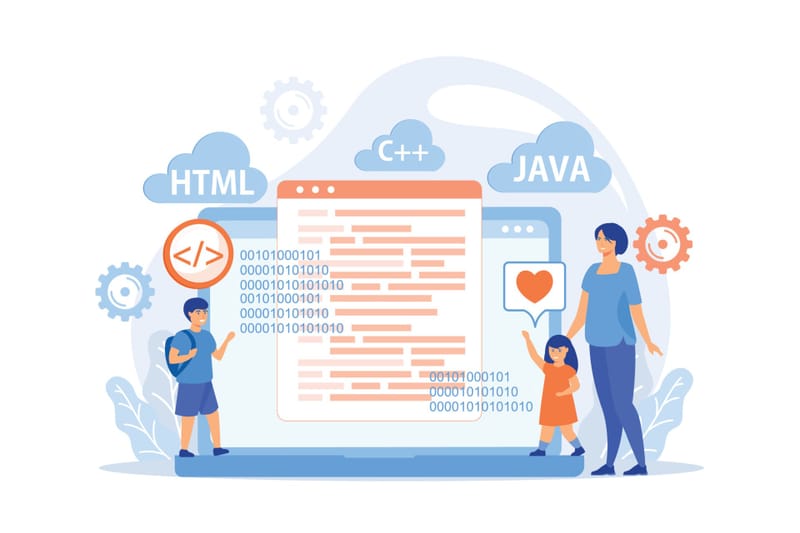
Be it a simple “Hello World” program or dealing with more sophisticated projects, Java is the most appropriate programming language for children. It merges in-depth professional coding and basic principles that are easy to grasp by kids.
Its organized syntax and object-oriented concepts get children acquainted with the basic notions of things like classes, objects, and inheritance hence giving them a firm background on complex programming. From infancy, this systematic approach instils the mentality of neat, well-ordered, effective code-writing techniques.
Basically, structured learning in Java combined with real-world application and supporting materials makes a unique fit. It offers the best way to learn Java, providing children with an understanding that goes beyond theory. They gain crucial skills that will be useful in life, helping them develop positive thinking and an unshakable foundation towards success that cannot be broken by any dynamic aspect of computer science and technology today.
Java Coding for Kids - FAQs
1. What are the 10 cognitive benefits of learning Java as a kid?

Java programming gives kids a launch for cerebral growth and learning by taking advantage of problem-solving along with thinking skills. More than learning to program, it is a journey in structured reading and principles of object orientation that prepares kids for their first steps in technology. Here are 10 cognitive benefits that children have:
✅ Improved critical thinking skills,
✅ Logical Thinking,
✅ Improved Memory and Recall,
✅ Attention to Detail,
✅ Patience and Perseverance,
✅ Creative Thinking,
✅ Abstract Thinking,
✅ Improved Mathematical Skills,
✅ Improved Organizational and Soft Skills
2. What are the Top 5 basic programming concepts pertaining to Java for kids?
Here are the top 5 basic programming concepts for kids to learn Java, these concepts are discussed in the brief in this blog only, you can scroll up to read more details on these concepts.
Variables and Data Types
Operators
Control Structures
Methods
Classes and Objects
3. How to explain Java to a kid?
In simple terms, Java is a language, like a special language that computers can understand. This language helps kids in creating their own games or apps! It’s like building a Lego world on your computer.
4. Java V/S Python - Which one should your kid learn?
When deciding between Java and Python for your kid, consider the features and benefits of each and your kid’s interests and learning style.
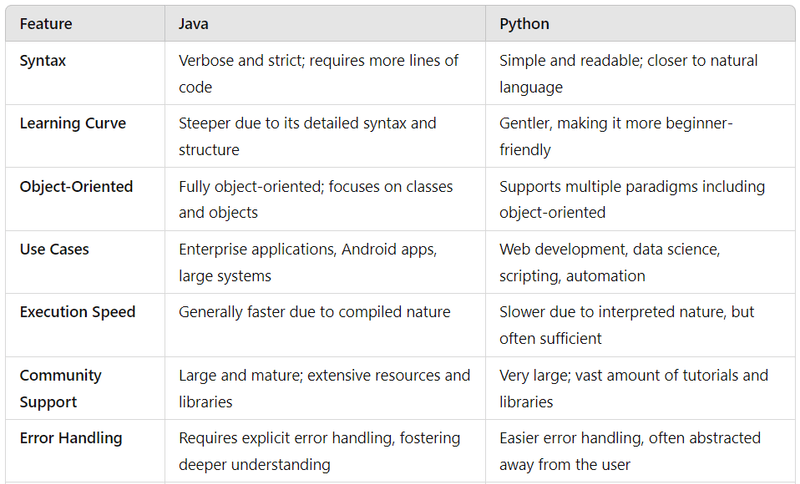
Choose Java for your kid if your child is interested in building big applications, Android development or going deep into object-oriented programming. Java’s structured and detailed learning process helps build a solid foundation in programming principles and practices if your child likes logical and systematic learning.
Opt for Python for your kid if your child is excited about quick programming, web development or data science. Python’s simplicity and readability make it super engaging for beginners. Kids can learn Python and offers versatility and ease of use which makes it perfect for exploring different areas of programming.
Both are valuable skills and opportunities. Encourage your child to start with either Java or Python based on their interest and they will be on their way to becoming proficient and passionate coders.
5. At what age can I start learning Java for kids?
There is no age limit to learn Java. But generally, kids in the age group of 10-12 years can understand the basic and mid-level concepts of programming, logical thinking and mathematical concepts to solve or write code.
However, younger kids (below 10 years) with strong interest and guidance can also start learning the basics of Java.
6. Can middle schoolers learn Java?
Yes, middle schoolers can learn Java. With the right resources, middle school students can successfully learn programming in Java.
Comments
Your comment has been submitted successfully!